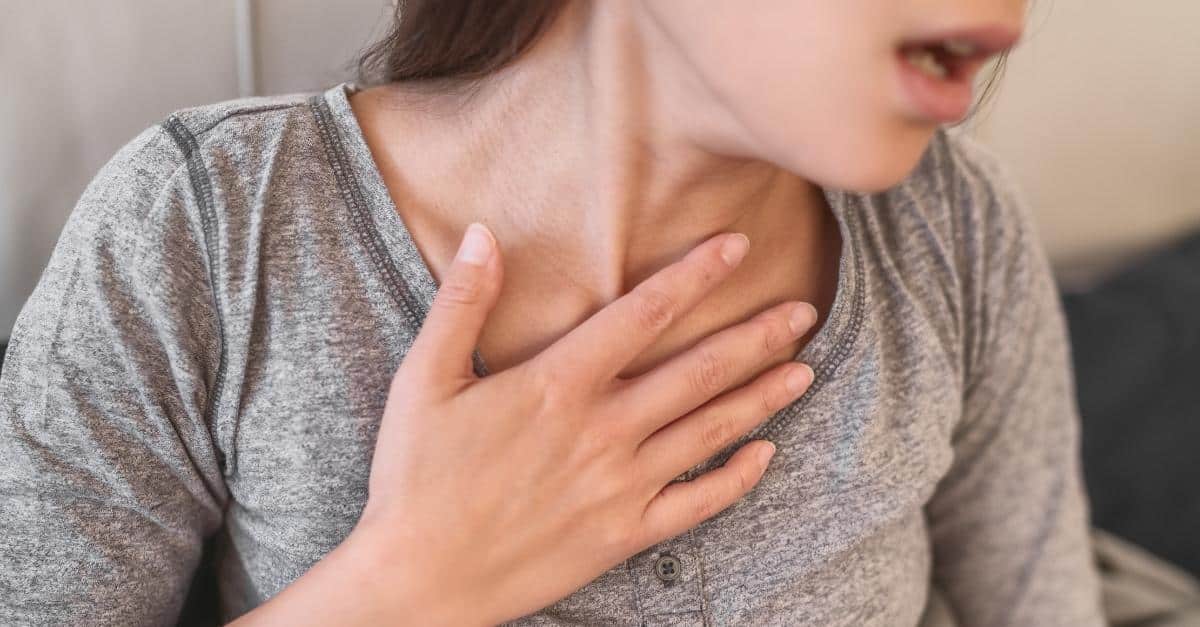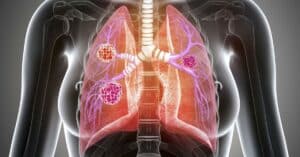Chest tightness can be a real problem for those with lung disease. Here are a few tips for relief.
For those living with lung diseases such as chronic obstructive pulmonary disease (COPD), a common symptom of the disease can be chest tightness.
As a symptom, chest tightness is typically associated with a continuing pain inside the chest, prompting breathing difficulties and ultimately a feeling of shortness of breath.
Known to cause symptoms similar to an anxiety or panic attack, chest tightness can cause severe amounts of distress.
As you can imagine, if you’re living with lung disease, any further conditions that make it more difficult to breathe are an unwelcomed addition to your quality of life.
Although there are treatment options available to address the symptoms of your disease along with the potential to slow disease progression and improve quality of life.
Sometimes a few tips for handling your day-to-day symptom expression can be vital tools to living a more comfortable life.
With your health in mind, the Lung Institute is here to bring you 5 Tips to Reduce Chest Tightness from COPD.
What is Chest Tightness?
As we mentioned above, chest tightness is often a euphemism for chest pain.
At its most intense, chest pain can mimic the symptoms of a heart or anxiety attack. This typically comes from hyperventilation (rapid breathing) that occurs when you try to inhale more quickly as a result of anxiety.
Though this pain can be caused by various ailments within the heart and lungs, we’re going to focus on chest tightness, commonly derived as a symptom of a lung condition.
Chest tightness can occur frequently (often) or persistently (continuously), and it can feel like sharp pinching within the chest, leading to long-lasting pain, pressure, or numbness.
Although this chest pain may feel like it’s coming from your heart, 85% of diagnoses after visiting the emergency room are unrelated to the heart.
In fact, in some cases, chest pain can be a result of simple bloating from gas build-up within the body.
Regardless, when these conditions occur and begin to feel uncomfortable and long-lasting, call your doctor immediately to find out for certain what you may be experiencing.
Things to check for when experiencing chest tightness:
- If you’ve been sitting for a while, blood clots can form and spread to your arteries, causing blockages. This can ultimately worsen lung conditions and make it more difficult to breathe.
- Should this occur, get to an emergency room immediately
- If you feel as though you’re lungs are heavy, and it’s difficult to breathe, you may be experiencing symptoms of pneumonia. If so, you need to check immediately if you’ve got a fluid build-up within the lungs, as this can be extremely dangerous for those with COPD. Call your doctor.
- In rare cases, a condition called pneumothorax (collapsed lung) may occur, leaving leaks in the space between your lungs and chest wall resulting in a bluish color in the extremities and severe shortness of breath. Call 911.
5 Tips to Reduce Chest Tightness
So, how do you feel better when confronted with chest tightness? Here are a few quick tips:
5. Slow Your Breathing
As hyper-ventilation can cause chest tightness and anxiety, slow your breathing down. You want to enforce a sense of control over your inhalations, so focus on slower breaths.
You’ll relax your mind and your body at the same time. Use your breathing techniques, such as pursed lips breathing.
4. Take Deeper Breaths
In meditation, a commonly taught practice is inhaling slowly and exhaling slowly. It doesn’t matter the size of the breath; just try to inhale for as high as eight counts, then exhale for the same amount.
Special note – Always breathe from the diaphragm, meaning your stomach should be the one rising, not your chest.
3. Fix Your Posture
When looking to relieve chest tightness, a focus on posture is paramount.
When breathing, straighten your back and keep your hands on your lap or your thighs. You also want to keep your eyes closed and your tongue touching the roof of your mouth.
When doing this, inhale through the nose and exhale through the mouth.
2. Change Your Diet
As we mentioned before, even simple bloating can lead to intense chest tightness and discomfort.
Avoid fatty, processed and fried foods as these can be large contributors to gas build-up within the body, ultimately leading to pressure and pain within the chest.
1. Seek Medication
When all else fails, it’s wise to know when to seek help. Schedule an appointment with your primary care physician if you experience frequent bouts of chest tightness.
They can help diagnose the root cause and offer medication solutions to relieve the pain or pre-empt the forming of symptoms.
Reducing Chest Tightness Moving Forward
The feeling of tightness within the chest can be a painfully routine condition when living with COPD.
The desire for relief quickly becomes all-encompassing when facing such a common occurrence.
In looking to address these symptoms in the long term, the first step is often the hardest: quit smoking.
Though we understand how difficult this can be, it’s incredibly important for your own longevity and quality of life.
The second step is easier than the first: build a healthier diet and exercise.
With these behavioral changes, it’s possible to greatly affect the pronouncement of symptoms within COPD, emphysema, or pulmonary fibrosis.

Christine Kingsley, APRN is the Health and Wellness Director at the Lung Institute where she focuses on providing helpful online resources for people looking for information on various lung diseases, breathing exercises, and healthy lifestyle choices. She advocates for holistic care that involves working with your doctor to explore all options including traditional and alternative care while focusing on diet and exercise as proactive measures.









